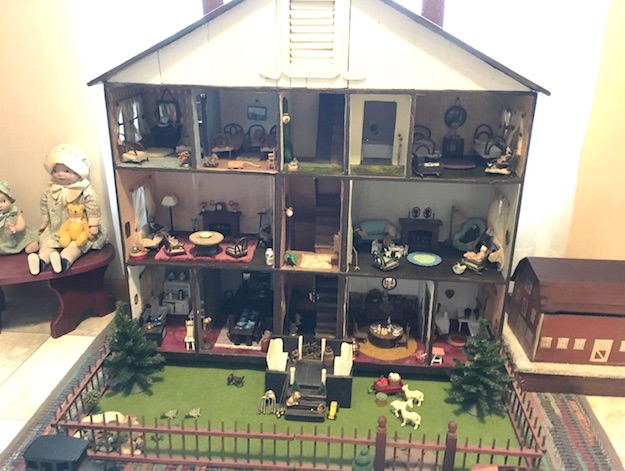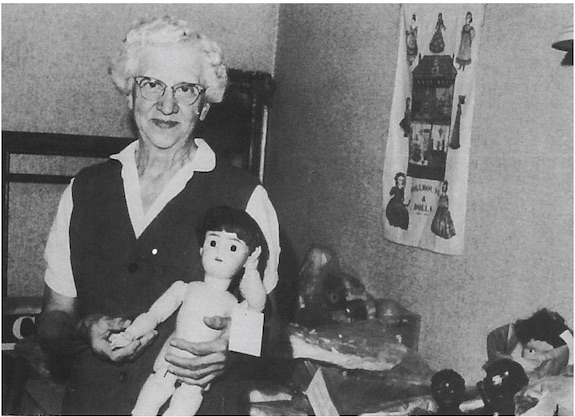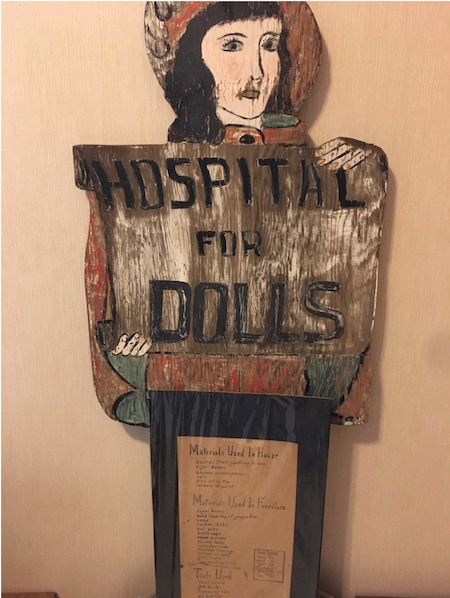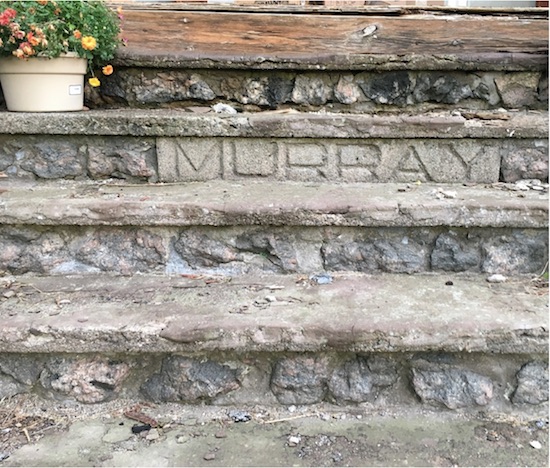Historic Childs: The Murray Dollhouse, Part 1
By Doug Farley, Cobblestone Museum Director – Vol 2. No. 40
CHILDS – A treasured family heirloom from the Curtis Murray family of Childs has a new life in the community that benefited from its earliest history.
The subject of this article is a remarkable children’s dollhouse that once resided at the Murray Farm, on Ridge Road, just west of Brown Street Road in Childs. The dollhouse has been passed down over the years from Mary Miller Murray, its creator, to her loving daughter, Janice Mann Beech, who has wonderful family memories of treasured moments spent with siblings and cousins, pretending to “keep house” while playing with painstakingly made miniature furniture, arranged in neat rooms, typical of their own farmhouse.
Janice recently decided to donate the dollhouse to the Cobblestone Museum, which intends to keep the artifact on permanent display in one of the bedrooms at the Vagg House, its 1920s themed building. This generous donation will ensure that the Murray family heirloom will be enjoyed by countless other children and families in years to come.
Curtis Murray, and his wife Mary, continued the farming legacy of Curt’s father George Murray, at what became known as Maple Lawn Farm, named after a row of maple trees that once lined the property. The Curtis Murray family was involved in dairying, and sold cream and butter on the farm. They also grew cash crops like cabbage, corn and cucumbers.
Curt and Mary had three children: George, Joyce and Janice. Mary made the dollhouse in 1934 for her children. Janice, the youngest of the children, was four years old at the time.
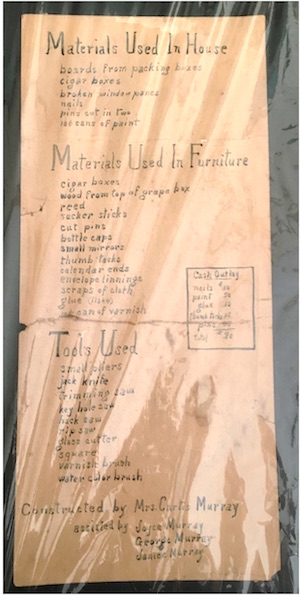
Janice said her mother didn’t try to explain the makeup of the family, it was just taken as fact. Simple things, like straight pins, were used as fasteners and hinges on the kitchen cabinets.
A wooden fence that surrounds the dollhouse was added later. Janice recalled that the fence provided a little buffer to help protect the dollhouse when it was transported to the racetrack at Batavia in the 1960s to be displayed in doll shows that were held there over the years. Also included in the setup is a wooden front porch that can be detached and stored in the dollhouse attic when it was not in use.
At some point, probably in the 1960s, Janice’s daughter, Mary Beth, added period wallpaper to many of the rooms. Also, a display card was added that talked about the materials used in the dollhouse that came to a total cost of 80 cents. Janice said, “At one point, the dollhouse was displayed in the early days of the Cobblestone Museum. I’m really happy that it’s going back there now.”
When the dollhouse was being used, it sat directly on the floor and the children would either sit or lay down beside it to look in the ground floor rooms and adjust all of the furniture. Kids could stand up and rearrange the second and third floor furnishings as desired. Janice said, “You know when you’re little, you get down on the floor. I don’t do that anymore, because then I’d have to get up!”
Janice said, “It was always played with. Kids knew they had to be careful and not abuse the furniture. But, it was made to be played with!” The dollhouse was kept in the front hall of their farmhouse. When not being used by the children, it was covered with a cloth and turned with its open front facing the wall, which provided dust protection for its plentiful contents. Janice believes that simple trick over the years has probably added to the longevity of the piece.
Still in use today, Janice explained, “There’s a little boy who visits, who loves it. Mostly he takes the car and the people go ‘camping.’ He doesn’t care much for the dollhouse, but he loves the car.”
Another object that Janice has kept through the ages is a toy barn that belonged to her cousin, Jack. She said he enjoyed playing with the barn that contained cutout cardboard animals that stood up with small wooden stands, and a cardboard car with button lights that he made for himself. These simple toys were all that it took to provide entertainment and education for growing children on the farm.
In addition to her family dollhouse, Mary Miller Murray (shown above) was known for her doll hospital. For over 40 years, Mrs. Murray repaired broken dolls. Janice said, “The dolls came in from all over the country. News spread, and the dolls came in by word of mouth. My mother kept a log. It was really remarkable.”
In addition to her many memories surrounding the dollhouse and doll hospital, Janice has many other special memories of growing up on Maple Lawn Farm, including the “old house” which was the original smaller house on the farm. Janice tells a story she heard from her father. At some point in about 1909, her grandparents built a new, larger house on the farm. Her father, Curt, recalled that that when he was a lad, his father moved the old house out onto Ridge Road and left it sit there overnight. It must have come as quite a shock to unsuspecting Ridge Road travelers that night!
The Murray Farm on Ridge Road is still standing today. There’s no escaping the Murray’s legacy with the building, either. The back steps into the building have the names of the Murray children engraved on them. The front steps have the name “Murray” embellished into the concrete.
Retired Cobblestone Museum Director Bill Lattin was pleased to see the dollhouse again and was especially pleased to learn that it was to be added to the permanent collection at the museum. He said, “This is going to be one of the ‘wow’ items. Right up there with our bird collection and the Civil War era body cooler.”
In part two of this article, we will look at the dollhouse’s arrival at the Museum as well as the décor of each of the dollhouse rooms.


























